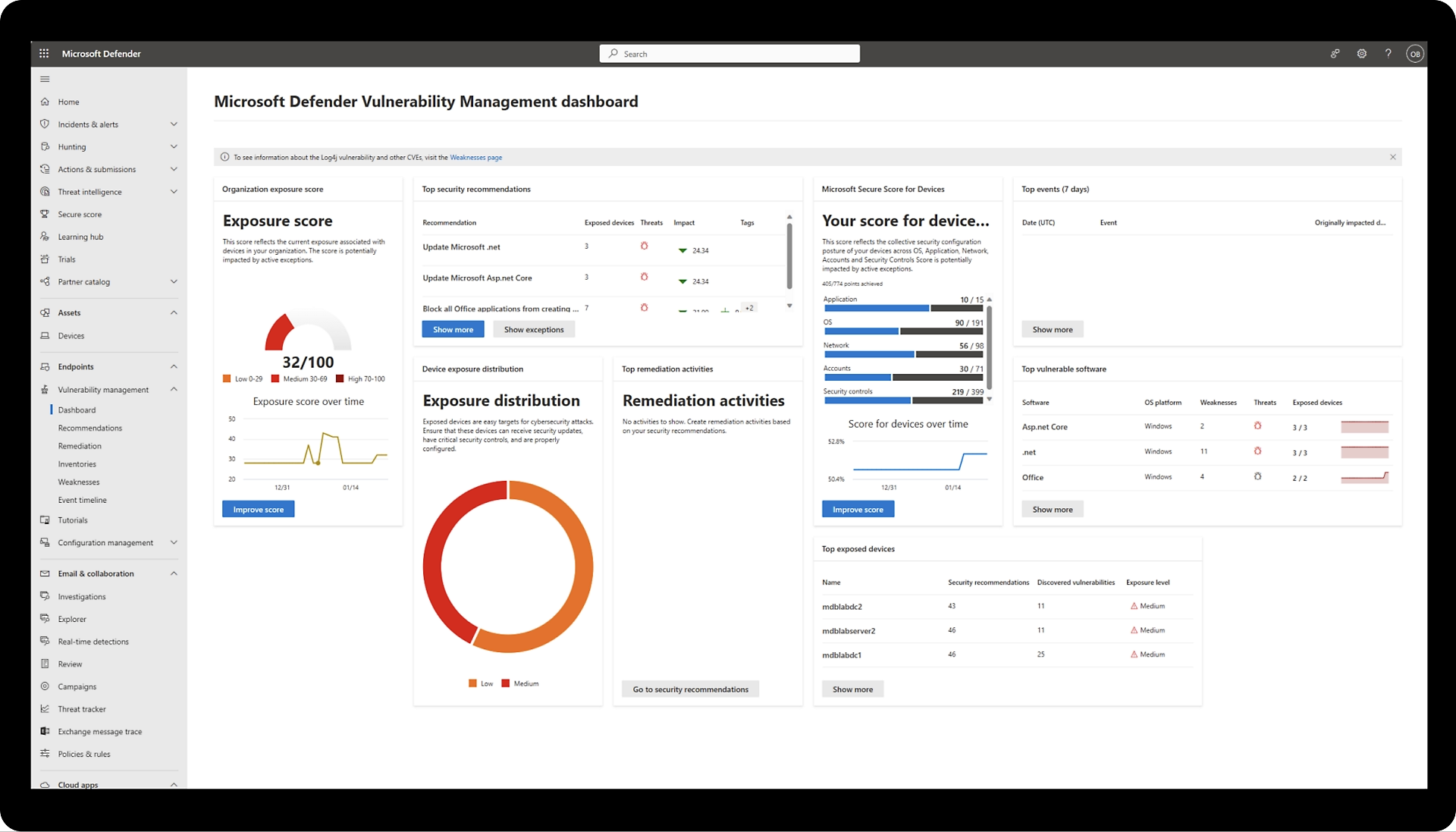Jonathan Kropf
- 12 min read
Consumption-based IT: A primer for your business

Discover how an agile approach to IT can help you scale quickly to accommodate growth and take on new business initiatives.

As enterprises face increasing pressure to compete in the digital realm and quickly adapt their business models to new market needs, they’re looking for smart ways to make their operations more efficient.
These companies are often maintaining far-reaching and complicated IT infrastructures that include a mixture of legacy IT, cloud-based IT, and on-premises systems. Managing them all can place a great deal of pressure on IT departments, especially those with resource constraints.
Faced with this challenge, many businesses are transitioning away from traditional IT models and toward a consumption-based approach that allows them to simplify IT operations, paying only for IT services and resources when they’re needed and cutting or even eliminating expensive, time-consuming capital investments in equipment.
The overall aim is to achieve a balance between cost, efficiency, and productivity. The company works with a trusted IT adviser who can support and help improve its IT operations. The partner also provides access to the latest innovations and technology, which businesses need to gain a competitive advantage in the marketplace. It’s an approach that’s similar to the kinds of flexible consumption models offered by public cloud providers such as Amazon Web Services, but offers the control, security, and reliability found in on-premises data centers.
Improving operational efficiency
One of the most pressing issues for IT leaders today is the need to improve operational efficiency. As you roll out new IT services to take advantage of new trends in the marketplace, you need to make sure the evolution to those new workloads is as pain-free as possible. When a trusted adviser leverages expertise and skills to coordinate IT services and resources for your business, the adviser helps you reallocate your existing resources to focus on functions and practices that are more aligned with your core business needs. This can mean changing skill sets in your team or reassigning staff to new positions.
Using a trusted adviser to manage your IT infrastructure also allows you to improve the efficiency of your IT staff because they spend less time administering and maintaining data center environments, or “keeping the lights on,” and more time on IT innovation and supporting the business. According to a recent IDC white paper titled “Business Value Enabled by HPE Datacenter Care Service,” these IT staff efficiencies and time savings can save an average of $11,661 per 100 users per year over three years, or $1.06 million per organization.
Consumption-based IT also helps to mitigate the risk that your lines of business are adopting cloud on their own. In the past, when an overstretched IT department has had to say no to lines of business with a new initiative, often these groups sought cloud support outside the purview and control of their IT departments. This raised the threat of possible data breaches and potential cost control issues. Now, with the ability to rapidly expand compute resources, time to market for projects is significantly faster, and you’re more likely to have the bandwidth to take on those new projects.
Increased control is an important benefit, too. While public cloud solutions simplify IT operations, they also require you to place your IT in someone else’s hands. Public cloud solutions are essentially “black boxes,” so the customer can’t directly choose or manage the cloud infrastructure. Using a consumption-based IT approach on-premises gives you much more control over security, privacy, and latency issues you might experience when using a public cloud. At a time when corporate data breaches are constantly in the headlines, companies want to keep risk in check and their data safe.
Consumption-based IT is essentially a partnership between the company and the service provider. Traditionally, companies have purchased equipment upfront, installed those assets, and maintained them over time. Today, with all the rapid changes in technology and market demands, this is a riskier prospect. With consumption-based IT, your company can now share that risk with the IT provider, which offers IT resources that scale up and down in line with the needs of the business. And you are not required to make costly investments in capital.
No More Overprovisioning
Lengthy procurement cycles drive the need to overprovision for many businesses. The ability to quickly ramp up capacity and proactively maintain the needed capacity is important for any enterprise that expects to grow rapidly, has seasonal spikes in demand, or wants to execute a new business idea quickly.
For example, imagine your company has just launched a brand new marketing campaign that reduces the price of several key products sold through your website. You expect the campaign to be a huge success, boosting your bottom line and clearing out unwanted inventory.
The campaign does indeed boost sales, but its success is a double-edged sword. The discounted products are so popular that they place huge strains on your IT infrastructure, crashing your website several times. When the marketing team devised the promotion, the IT team was not included in the planning, and so it didn’t have the capacity on hand to handle the sudden surge in web traffic. As a result, the promotion failed, not due to a lack of interest, but because of a lack of sufficient IT capacity.
It’s a scenario many companies face: The IT capacity they need and the IT capacity available are oftentimes out of step. It’s a more common problem now that businesses are under greater pressure to accelerate business transformation and quickly exploit technology-driven opportunities. A lack of capacity will stop you from addressing a new business idea, but overprovisioning means you’re spending more than you need to on IT.
With a solution such as HPE GreenLake Flex Capacity, you can scale capacity as it’s needed. A customer has access to a dashboard of analytics showing how much capacity is being consumed, and in real time. The IT provider and the customer meet regularly to ensure capacity is optimized for the business, so the provider knows if there are any potential periods of high demand on the horizon, such as the launch of a new product or a marketing campaign. HPE provides a local buffer of capacity that can be drawn on as needed. Active capacity management, coupled with the on-site buffer, ensures that you do not run out of capacity. The customer pays only for what the company uses. There is no upfront capital outlay.
It’s an approach that should make IT easier in the long run because IT departments will no longer have to make big investments in managing their IT environments. Instead, they can leave that work to a trusted vendor with a depth of experience and expertise in the field. The company’s internal IT team will have more time to focus on strategic initiatives and core business objectives. IT can be the smartest guys in the room again and spend more time creating IT solutions to tackle new market opportunities.
Simplify Your IT Budget
Consumption-based IT is a great option for businesses that want to reduce capital expenditures and align IT spending with business initiatives. Businesses pay only for the IT resources they actually use, and can expand or shrink costs based on their needs.
Generally, many businesses now want the same flexible consumption-based models that utility and telecom companies have long provided. The benefits of this approach include financial predictability and a clear insight into your costs, which allow for better decision-making on budgets, helping you more easily meet your cash flow and capital allocation strategies. In this way, consumption-based IT allows you to move from a costly capital expenditure model to a variable cost structure. The overall effect is similar to a public cloud-like experience that allows you to keep a tighter control on your operations in-house.
And given that consumption-based payments provide you with the flexibility to adjust costs month by month, they can help reduce overprovisioning. According to 451 Research, on average 59 percent of businesses overprovision IT resources. But a consumption-based approach can help you avoid that surplus and create a clear link between the dollars you spend and the company’s business objectives.
Consumption-based IT: Lessons For Leaders
Consumption-based IT offers the flexibility of cloud with the control, security, and reliability found in on-premises data centers.IT consumption models allow businesses to pay for IT resources and capacity when they need it, leading to a reduction or even elimination of capital expenses and other costs.The ability to rapidly expand IT infrastructure resources means the IT department can say yes to more line of business requests.
Share Link



